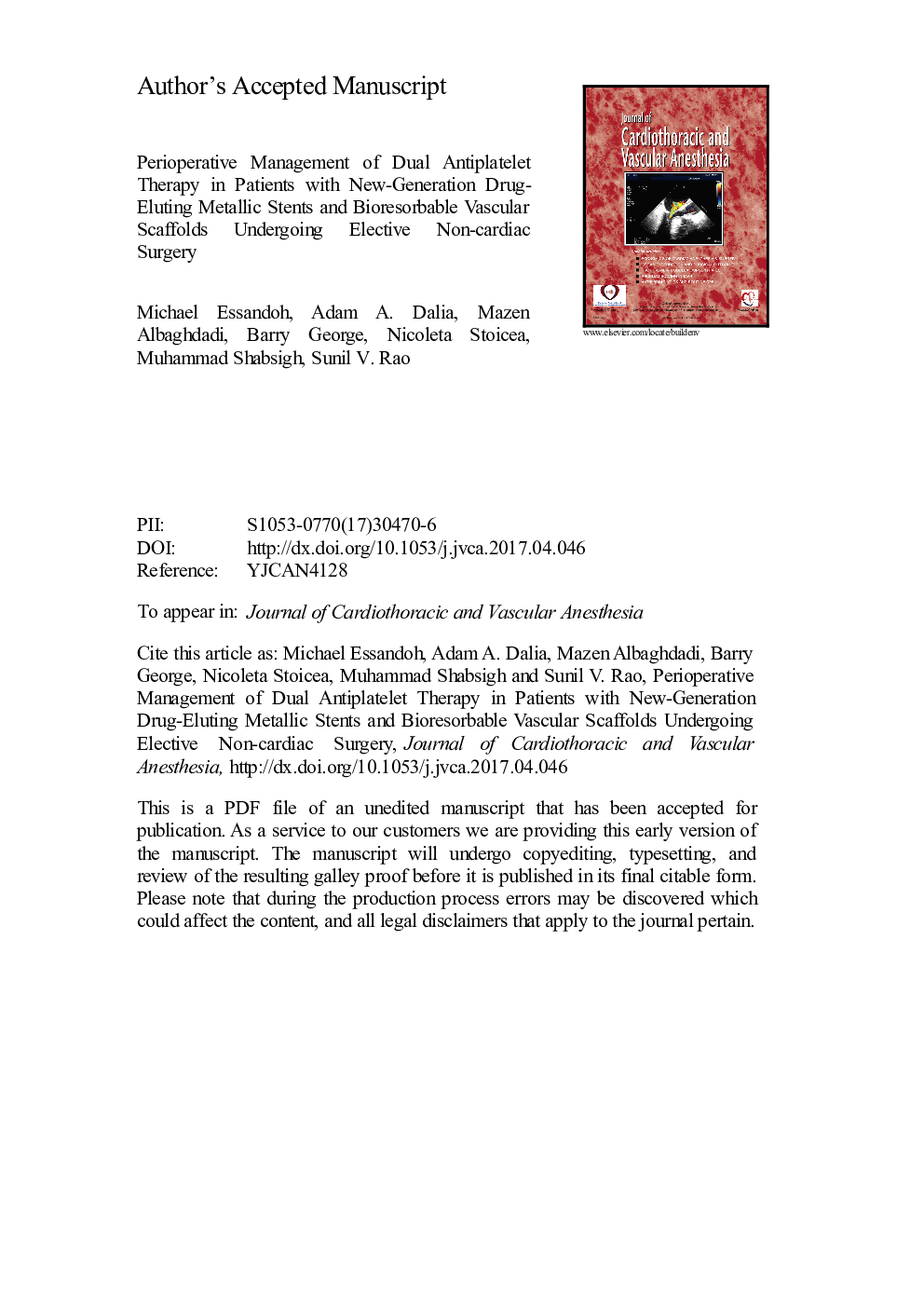| Article ID | Journal | Published Year | Pages | File Type |
|---|---|---|---|---|
| 5582302 | Journal of Cardiothoracic and Vascular Anesthesia | 2017 | 33 Pages |
Abstract
Dual-antiplatelet therapy (DAPT) is considered mandatory after new-generation drug-eluting coronary stent implantation to reduce ischemic complications such as stent thrombosis, but the need for DAPT makes the timing of elective surgery difficult. Interrupting DAPT places patients at risk for stent thrombosis, and surgery in the setting of DAPT may lead to bleeding. The 2016 American College of Cardiology/American Heart Association guideline recommends delaying elective noncardiac surgery for a minimum 6-month period to reduce ischemic risks after the implantation of a second-generation metallic drug-eluting stent (DES). However, the guideline fails to appropriately stratify surgical patients based on the indication for second-generation metallic DES implantation and other patient characteristics. The Absorb bioresorbable vascular scaffold (Abbott Vascular, Abbott Park, IL), which has a higher propensity for stent thrombosis compared with second-generation metallic DES, also produces DAPT management challenges in patients presenting for elective noncardiac surgery. Due to the novelty of bioresorbable vascular scaffold therapy, there are no guidelines available for the management of patients undergoing elective noncardiac surgery. This review addresses DAPT management in patients undergoing noncardiac surgery less than 12 months after new-generation metallic DES or bioresorbable vascular scaffold implantation and provides further guidance for anesthesiologists who encounter these challenging cases.
Keywords
Related Topics
Health Sciences
Medicine and Dentistry
Anesthesiology and Pain Medicine
Authors
Michael MD, Adam A. MD, MBA, Mazen MD, Barry MD, Nicoleta MD, PhD, Muhammad MD, Sunil V. MD,
